Introduction to Human Physiology and mosyly nerons
1/122
There's no tags or description
Looks like no tags are added yet.
Name | Mastery | Learn | Test | Matching | Spaced |
|---|
No study sessions yet.
123 Terms
Physiology
Study of biological function and body mechanisms.
Homeostasis
Dynamic constancy of internal body environment.
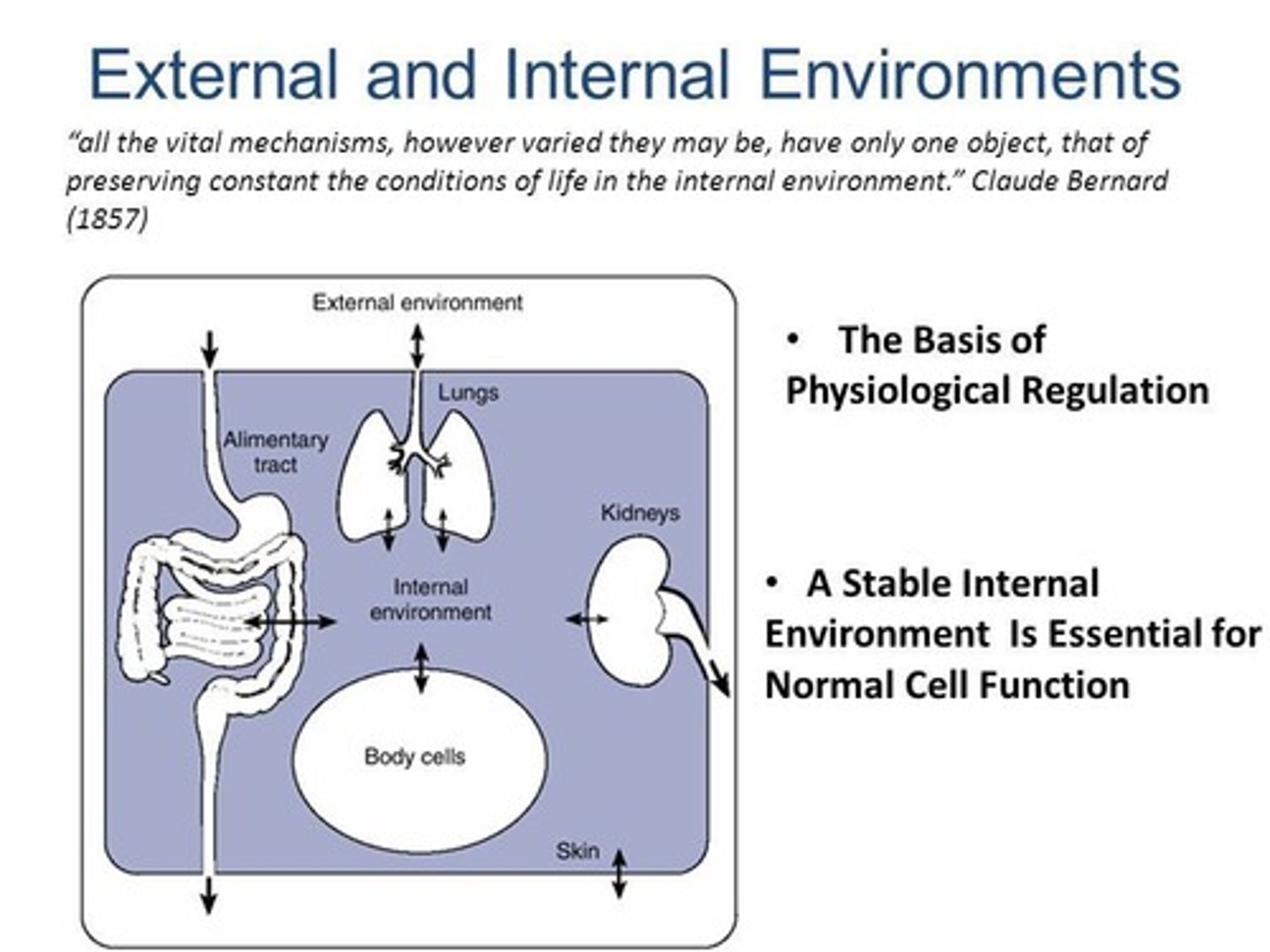
Scientific Method
Systematic approach for scientific investigation.
Hypothesis
Testable prediction based on observations.
Clinical Trials
Phased testing of drugs on humans.
In Vitro
Experiments conducted in a controlled environment.
In Vivo
Experiments conducted in living organisms.
Molecule
Smallest unit of a chemical compound.
Cell
Basic structural and functional unit of life.
Tissue
Group of similar cells performing a function.
Organ
Structure composed of multiple tissue types.
System
Group of organs working together.
Organism
Complete living entity with functioning systems.
Muscle Tissue
Specialized for contraction and movement.
Nervous Tissue
Composed of neurons for communication.
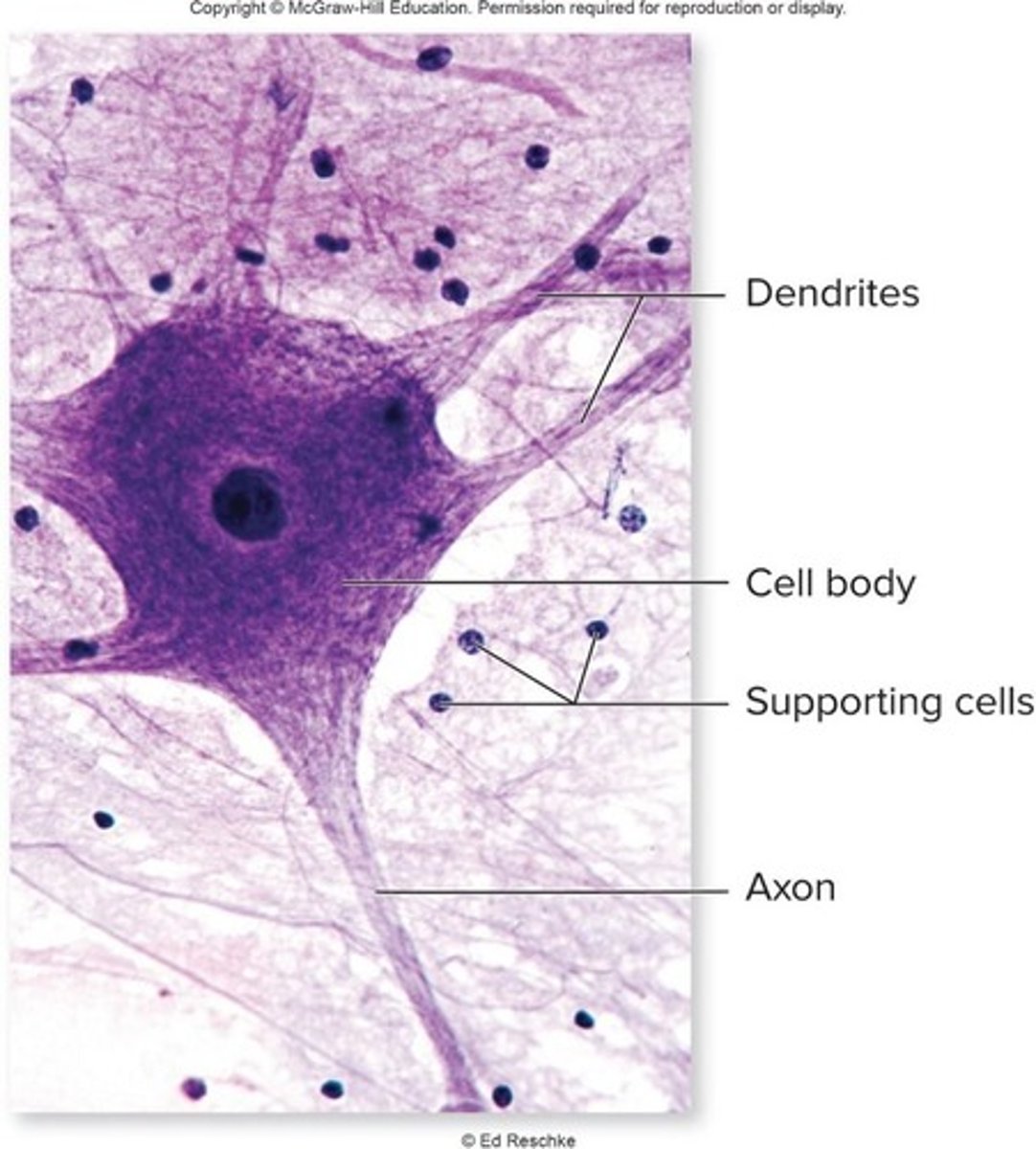
Epithelial Tissue
Covers surfaces and lines hollow organs.
Connective Tissue
Supports and connects different body parts.
Skeletal Muscle
Voluntary muscle controlled consciously.
Cardiac Muscle
Involuntary muscle found in the heart.
Smooth Muscle
Involuntary muscle in hollow organs.
Negative Feedback System
Regulates controlled variables to maintain homeostasis.
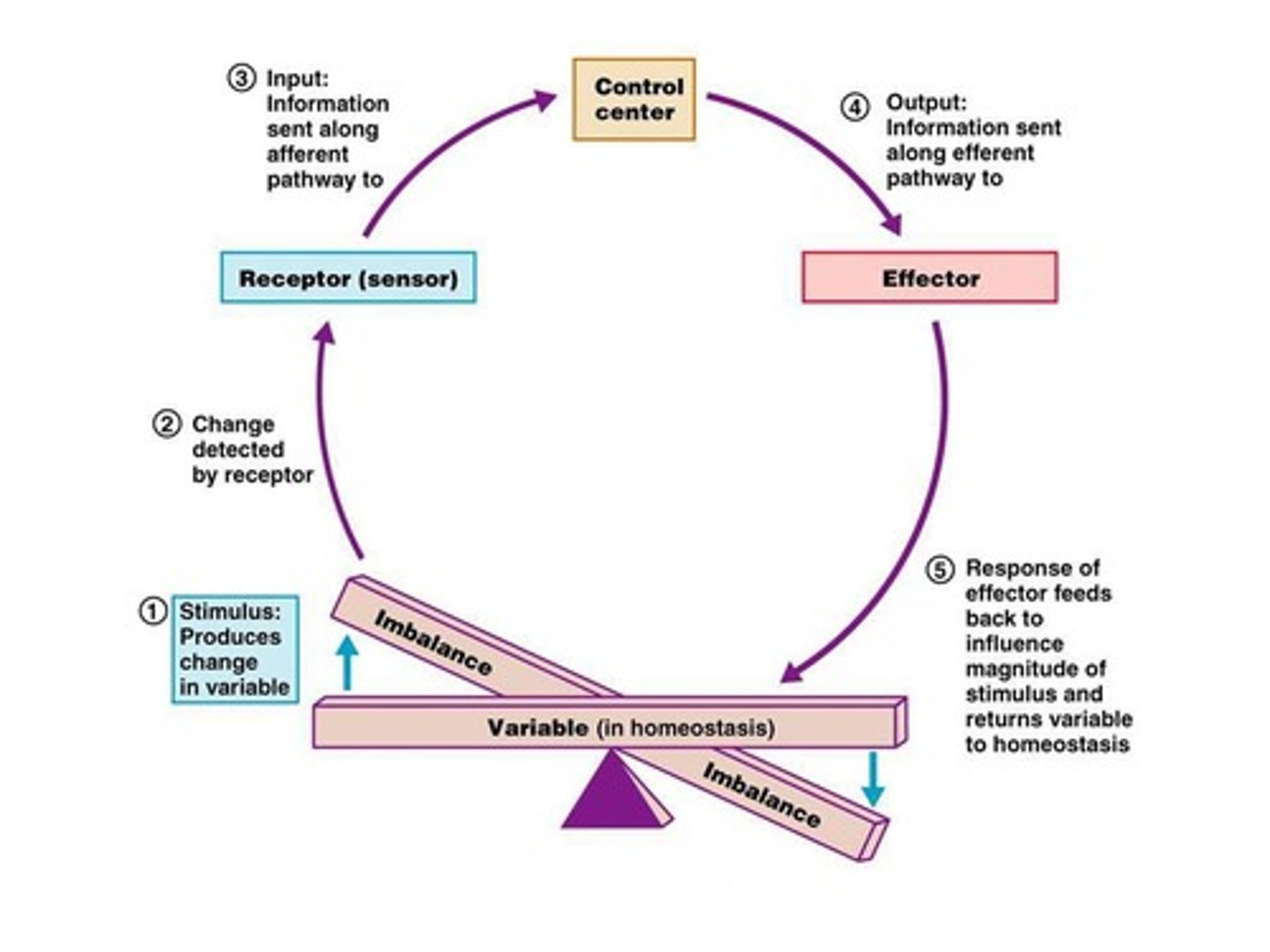
Positive Feedback System
Reinforces changes in a controlled variable.
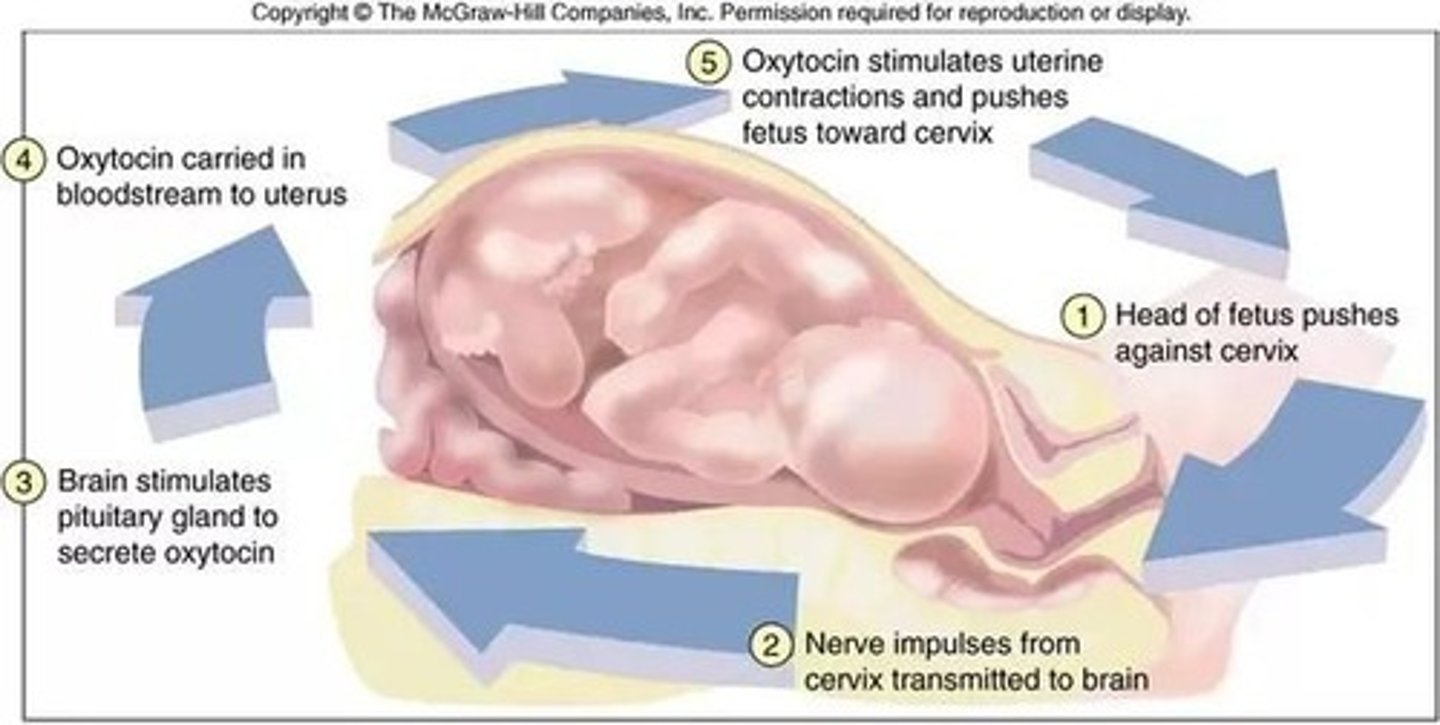
Baroreceptor
Detects changes in blood pressure.
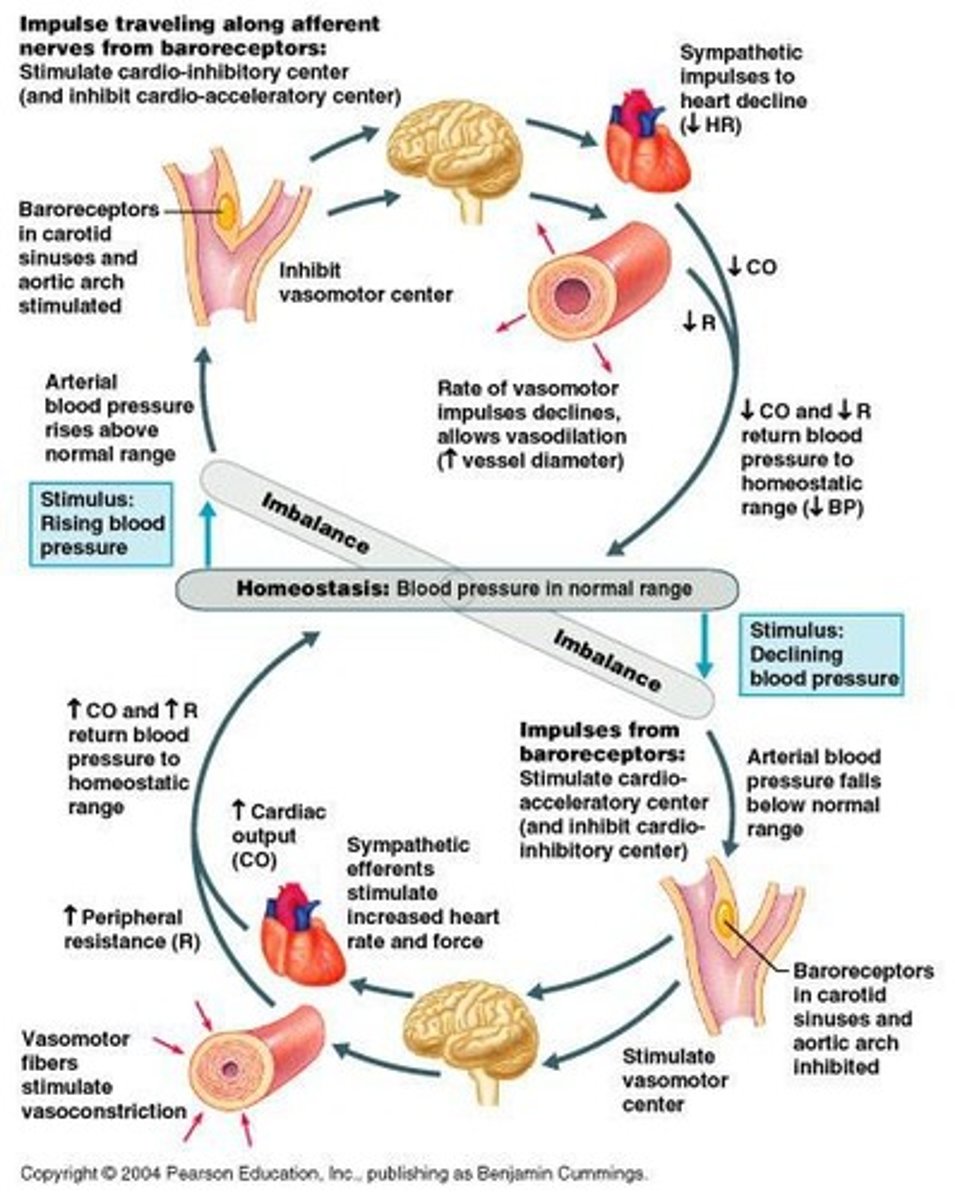
Pancreatic Cells
Regulate blood sugar through insulin production.
Controlled Variable
Factor being regulated in a feedback system.
Control Center
Processes information and determines response.
Effector
Carries out response to restore balance.
what do nodes of Ranveer do Conduction in a Myelinated Neuron?
Nodes of Ranvier allow Na+ and K+ to cross the membrane, and Action potentials "leap" from node to node
Conduction of Nerve Impulses step 1
action potential
occurs at a given point on a
neuron membrane,
Conduction of Nerve Impulses step 2
voltage -
gated Na+ channels open as a
wave down the length of the
axon.
Conduction of Nerve Impulses step 3
action potential at one
location serves as the
depolarization stimulus for the
next region of the axon
Conduction of Nerve Impulses step 4
Conduction with no decrement. (ction potentials at one location on a neuron membrane serve as the depolarization stimulus for the next region of the axon)
Action Potentials
Refractory Periods
Action potentials can only increase in
frequency to a certain point. There is a
refractory period after an action
potential when the neuron cannot
become excited again.
when does absolute refractory occur
The absolute refractory period occurs
during the action potential. Na+
channels are inactive (not just closed)
when does relative refractory occur
The relative refractory period is when K+ channels are still open. Only a very strong stimulus can overcome this.
Each action potential remains a
separate__________________ event
all-or-none event.
A stronger stimulus will make action potentials occur ___________
frequently. (frequency modulated)
more
what is frequency modulated
how a stronger stimulus affects action potentials
A stronger stimulus may also activate ___________ neurons in a nerve.
This is called recruitment
more
Recruitment is the process
where a stronger stimulus can activate more neurons in a nerve
All-or-None Law
1. Once threshold has been
reached, an action potential
will happen.
2. The size of the stimulus will
not affect the size of the
action potential, it will
always reach +30mV.
3. The size of the stimulus will
not affect individual action
potential duration.
Voltage-Gated K+ Channels
At around +30mV, voltage-gated K+ channels open, and K+ rushes out
of the cell following the electrochemical gradient.
what do k gated channels do
makes the cell repolarize back toward the potassium equilibrium
potential.
what are k channel goals in repolarizing the cell
Repolarization actually overshoots resting potential and gets down to −85mV. Na+/K+ pumps quickly reestablish resting potential.
what do nodes of Ranveer do Conduction in a Myelinated Neuron?
Nodes of Ranvier allow Na+ and K+ to cross the membrane, and Action potentials "leap" from node to node
Conduction of Nerve Impulses step 1
action potential
occurs at a given point on a
neuron membrane,
Conduction of Nerve Impulses step 2
voltage -
gated Na+ channels open as a
wave down the length of the
axon.
Conduction of Nerve Impulses step 3
action potential at one
location serves as the
depolarization stimulus for the
next region of the axon
Conduction of Nerve Impulses step 4
Conduction with no decrement. (ction potentials at one location on a neuron membrane serve as the depolarization stimulus for the next region of the axon)
Action Potentials
Refractory Periods
Action potentials can only increase in
frequency to a certain point. There is a
refractory period after an action
potential when the neuron cannot
become excited again.
when does absolute refractory occur
The absolute refractory period occurs
during the action potential. Na+
channels are inactive (not just closed)
when does relative refractory occur
The relative refractory period is when K+ channels are still open. Only a very strong stimulus can overcome this.
Each action potential remains a
separate__________________ event
all-or-none event.
A stronger stimulus will make action potentials occur ___________
frequently. (frequency modulated)
more
what is frequency modulated
how a stronger stimulus affects action potentials
A stronger stimulus may also activate ___________ neurons in a nerve.
This is called recruitment
more
Recruitment is the process
where a stronger stimulus can activate more neurons in a nerve
All-or-None Law
1. Once threshold has been
reached, an action potential
will happen.
2. The size of the stimulus will
not affect the size of the
action potential, it will
always reach +30mV.
3. The size of the stimulus will
not affect individual action
potential duration.
Voltage-Gated K+ Channels
At around +30mV, voltage-gated K+ channels open, and K+ rushes out
of the cell following the electrochemical gradient.
what do k gated channels do
makes the cell repolarize back toward the potassium equilibrium
potential.
what are k channel goals in repolarizing the cell
Repolarization actually overshoots resting potential and gets down to −85mV. Na+/K+ pumps quickly reestablish resting potential.
Voltage-Gated Na+ Channels
(Depolarization) open when the membrane reaches what ?
These channels open if the
membrane potential depolarizes to
−55mV.
what happens when the Voltage-Gated Na+ Channels are opened for
(Depolarization) ?
Sodium rushes in due to the
electrochemical gradient. More Na+ channels are open.
when and why are Voltage-Gated Na+ Channels
(Depolarization) deactivated?
Voltage-gated Na+ channels are deactivated at around +30mV, which prevents more sodium ions from flowing in
Changes in membrane potential are
controlled by changes in the flow of ions
through channels. name them and their functions
K+ has two types of channels:
1) Not gated (always open), sometimes called K+ leakage
channels
2) Voltage-gated K+ channels, open when a particular
membrane potential is reached, closed at resting
potential
b. Na+ has only voltage-gated channels that are
closed at rest, the membrane is less permeable
to Na+ at rest.
At rest a neuron is considered _________ when
the _______ is more________ than the __________
polarized, inside, negative, outside
depolarization
When the membrane potential inside the cell
increases (becomes more positive)
Depolarization occurs
when
positive ions enter the cell (usually Na+).
Excitatory.
A return to resting potential is called
repolarization
hyperpolarization
When the membrane potential inside the cell
decreases (becomes more negative)
Hyperpolarization
occurs when
positive ions leave the cell
(usually K+) or negative ions (Cl−) enter the
cell. Inhibitory.
Altering Membrane Potential
Neurons and muscle cells can change their
membrane potentials, excitability or irritability, Caused by changes in the permeability to
certain ions
If a sodium channel is open
sodium ions will flow inside the cell due to the concentration difference
If a potassium channel is open
potassium is going to flow outside
If a channel is open for chloride
chloride is going to flow in
If a channel is open for calcium
calcium is going to flow in
Central nervous system (CNS)
Brain and spinal cord
Peripheral nervous system
(PNS)
Nerves, ganglia, and nerve plexuses (outside of the CNS)
Interneuron
Multipolar neuron located entirely within the CNS
Sensory neuron (afferent
neuron)
Neuron that transmits impulses from a sensory receptor into
the CNS
Motor neuron (efferent
neuron)
Neuron that transmits impulses from the CNS to an effector
organ, for example, a muscle
Nerve
Cablelike collection of many axons in the PNS, may be
"mixed" (contain both sensory and motor fibers)
Somatic motor nerve
Nerve that stimulates contraction of skeletal muscles
Autonomic motor nerve
Nerve that stimulates contraction (or inhibits contraction) of
smooth muscle and cardiac muscle and that stimulates
glandular secretion
Ganglion
Grouping of neuron cell bodies located outside the CNS
Nucleus
Grouping of neuron cell bodies within the CNS
Tract
Grouping of axons that interconnect regions of the CNS
Schwann cells
PNS ,Also called neurolemmocytes, produce the myelin sheaths
around the myelinated axons of the peripheral nervous
system, surround all PNS axons (myelinated and
nonmyelinated) to form a neurilemmal sheath
Satellite cells
PNS, Support functions of neurons within sensory and
autonomic ganglia
Oligodendrocytes
CNS, Form myelin sheaths around central axons, producing
"white matter" of the CNS
Microglia
CNS, Phagocytose pathogens and cellular debris in the CNS
Astrocytes
CNS, Cover capillaries of the CNS and induce the blood-brain
barrier, interact metabolically with neurons and modify
the extracellular environment of neurons
Ependymal cells
CNS, Form the epithelial lining of brain cavities (ventricles)
and the central canal of the spinal cord, cover tufts of
capillaries to form choroid plexuses—structures that
produce cerebrospinal fluid
In the CNS the myelin sheath is
produced by ___________________.
oligodendrocytes
In the CNS, the myelin sheath is
produced by .
oligodendrocytes.
what is this
oligodendrocyte

Myelin gives these tissues (axons) a white color = white matter. t or f
t
Gray matter is cell bodies and
dendrites which lack myelin sheaths. t or f
t
All axons in the PNS are
surrounded by a sheath of_____________ cells called the
____________ or sheath of
______________
Schwann, neurilemma, Schwann
Gaps between Schwann
cells
called nodes of, Ranvier